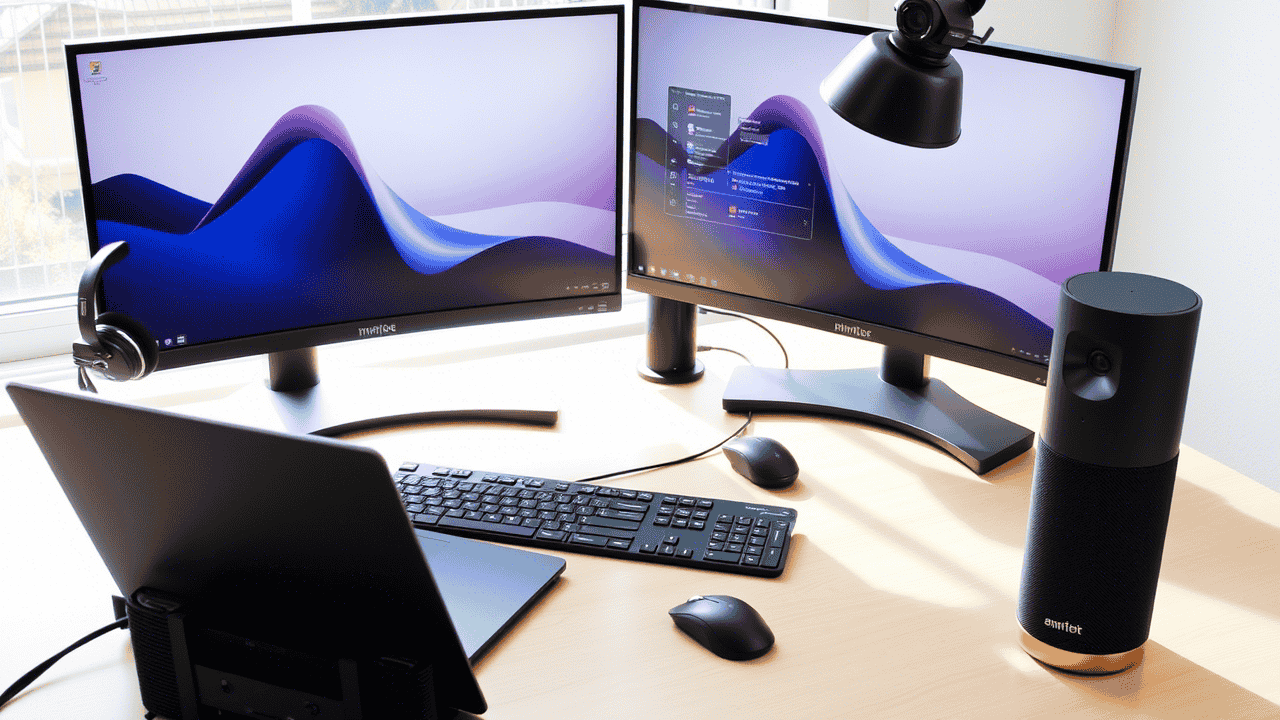Your home office arsenal of laptops, monitors, keyboards, and headsets has become the backbone of your remote work success. But here's the uncomfortable truth – most remote workers only think about gadget maintenance when something breaks down, often during a crucial meeting or deadline. The average remote worker loses 5-7 productive hours monthly dealing with preventable tech issues. With remote work becoming a permanent fixture in our professional lives, proper gadget maintenance isn't just good practice—it's essential for consistent productivity and extending the lifespan of your valuable tech investments. This guide reveals practical maintenance strategies that take minutes to implement but save hours of frustration and hundreds of dollars in replacement costs.
Why Your Remote Work Gadgets Need Regular TLC
Remote work technology endures more consistent use than ever before. Your laptop that once enjoyed weekend breaks now powers through 40+ hour workweeks plus evening Netflix sessions. This increased usage accelerates wear and tear, making proper maintenance critical for preventing unexpected failures.
Laptop Maintenance: Your Productivity Powerhouse
1. Schedule Weekly Digital Cleaning Sessions
Your laptop's performance gradually declines as unnecessary files accumulate and applications run in the background. Dedicate 15 minutes every Friday to:
- Clear browser caches and temporary files
- Uninstall unused applications
- Organize desktop files into appropriate folders
- Empty the recycle bin/trash
A study by Intel found that regular digital cleaning can improve computer performance by up to 30%, translating directly to faster load times and smoother operation during video calls.
2. Physical Cleaning That Actually Protects Components
Most remote workers are shocked to learn that dust can increase a laptop's internal temperature by up to 20°C, dramatically shortening its lifespan. Monthly physical cleaning should include:
- Powering down completely before cleaning
- Using compressed air to clean keyboard crevices and vents (hold fans still while doing this!)
- Wiping screens with microfiber cloths and appropriate cleaning solutions (never spray directly on screens)
- Cleaning ports with wooden toothpicks to remove lint buildup
Pro tip: Create a recurring calendar reminder for monthly cleaning sessions to establish this habit.
3. Battery Management for Extended Lifespan
Modern lithium-ion batteries last longest when kept between 20% and 80% charge. Contrary to popular belief, constantly keeping your laptop plugged in actually degrades battery health faster. Consider these practices:
- Use manufacturer-provided battery management software when available
- Aim to complete a full charge cycle (0-100%) once monthly
- Keep your laptop away from heat sources that accelerate battery degradation
- Replace batteries showing signs of swelling immediately
Peripheral Maintenance: The Forgotten Productivity Tools
4. Keyboard and Mouse Maintenance
These frequently touched devices harbor more bacteria than most toilet seats and collect skin oils that gradually degrade performance.
For effective cleaning:
- Disconnect before cleaning (wireless devices should have batteries removed)
- Turn keyboards upside down and gently shake to remove debris
- Use a small brush to dislodge stubborn particles
- Clean keycaps with alcohol wipes (70% isopropyl alcohol)
- Clean mouse sensors with microfiber cloth and gently blow out accumulated dust
5. Headset and Audio Equipment Care
Poor audio quality is the number one complaint during remote meetings. Maintain crystal-clear communication by:
- Cleaning ear cushions with alcohol wipes monthly
- Checking and cleaning microphone openings of debris
- Storing headsets on stands rather than throwing them on desks
- Replacing ear cushions annually for optimal comfort and hygiene
Networking Equipment: Your Digital Lifeline
6. Router and Modem Maintenance
Your internet connection is only as good as your networking equipment's health. A shocking 60% of "internet issues" actually trace back to poorly maintained home networking equipment.
Quarterly router maintenance should include:
- Power cycling (completely disconnecting from power for 30 seconds)
- Dusting external surfaces and vents
- Checking cable connections for damage or looseness
- Updating firmware (most modern routers can do this automatically)
- Optimizing placement away from interference sources
7. Cable Management and Protection
Frayed cables aren't just unsightly—they're dangerous and unreliable. Implement these practices:
- Use cable management solutions to prevent bending and stress
- Label cables for easy identification
- Invest in surge protectors to safeguard against power fluctuations
- Replace cables showing signs of wear before they fail
Preventative Maintenance Strategies
8. Software Updates and Security Maintenance
Remote workers face 40% more security threats than office-based counterparts, making software maintenance critical:
- Enable automatic operating system updates
- Regularly update applications, especially videoconferencing and security software
- Run scheduled antivirus scans weekly
- Back up important files to cloud storage and/or external drives
9. Creating a Maintenance Schedule That Works
The most effective maintenance isn't reactive—it's planned. Create a simple maintenance calendar:
- Daily (2 minutes): Quick desk tidying and cable organization
- Weekly (15 minutes): Digital cleaning and quick physical wipedown
- Monthly (30 minutes): Deep clean of all peripherals and laptop
- Quarterly (1 hour): Network equipment checkup and workspace reorganization
Small Efforts, Massive Returns
Implementing these maintenance routines requires minimal time investment but delivers substantial returns in productivity, equipment lifespan, and reduced stress. Even adopting just three practices from this guide can reduce technical issues by up to 60% according to remote work satisfaction surveys. Remember that maintenance isn't about perfection—it's about consistency. Start small, perhaps with weekly digital cleaning, and gradually incorporate other practices. Your future self will thank you when you're meeting important deadlines without technical interruptions.
Most importantly, schedule your first maintenance session now rather than waiting for signs of trouble. The most expensive maintenance is the kind you perform after something has already broken. Your remote work success depends not just on having the right tools, but keeping them in optimal condition.

